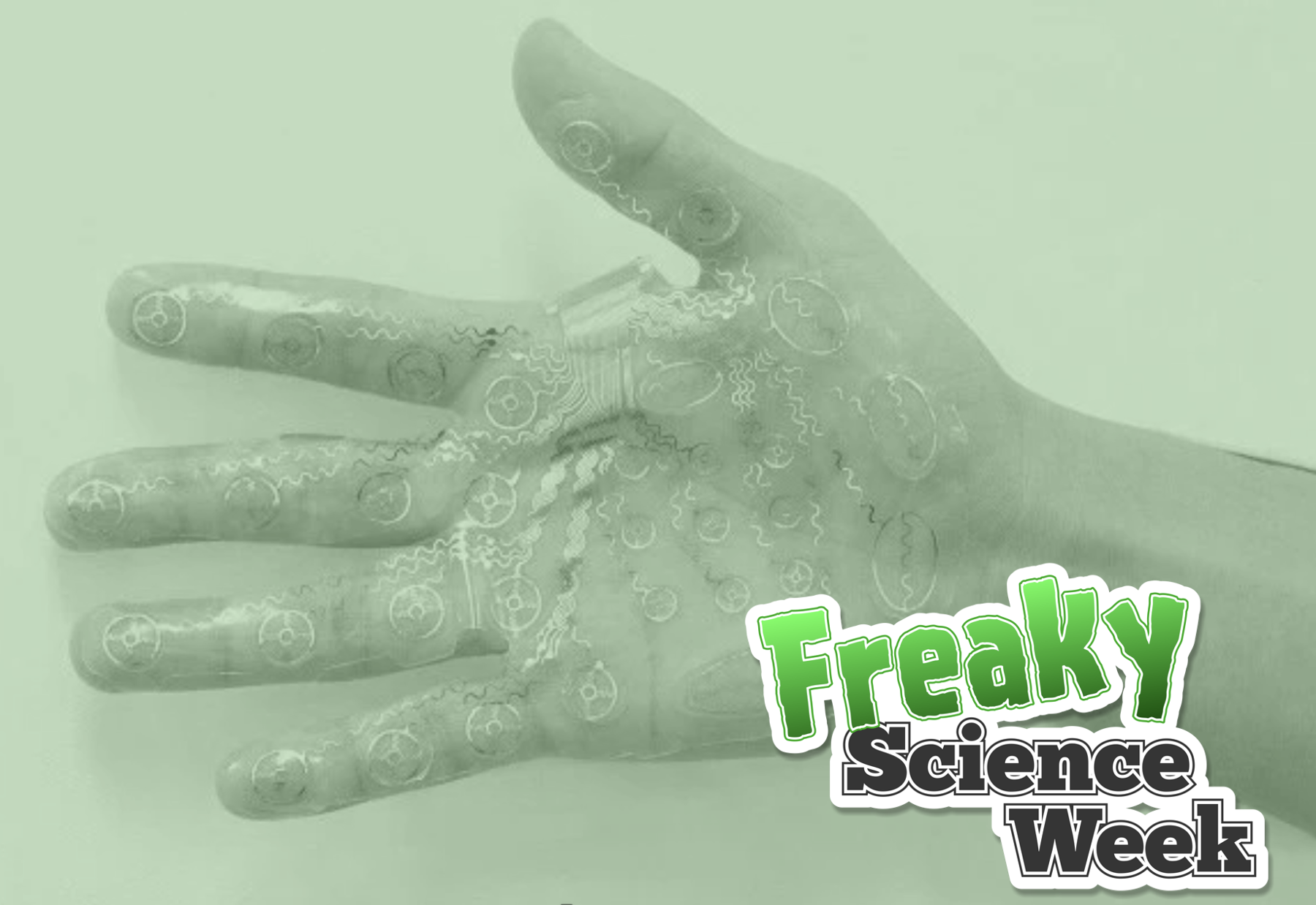Awakening of the E-Skin
Soon you’ll be able to “hug” people who aren’t there

This week, Questionist asks and answers the question, “What have scientists been up to lately that should scare the bejeezus out of us?” On Monday we covered in-vitro gametogenesis, on Tuesday robotic bees, and on Wednesday necrobotics. Come back Friday for one more freak-out – and sleep tight!
I think it was the scare quotes around “feel” that first gave us pause.
“Friends and family in different places could use it to ‘feel’ each other,” Yu Xinge said, in a February press release from the City University of Hong Kong. He was talking about the electronic skin he’s been developing as a professor in the university’s biomedical engineering department, and he used that mid-teens catchphrase “internet of things” to describe how it would allow bidirectional haptic communication across great distances. (Sometimes he uses the more-novel “touch intercom.”)
Another article shows CityU’s palm-covering e-skin device, which looks more like an elaborate henna tattoo than a prosthetic. “The newly developed innovation has great application potential in virtual games, sports, technical training, social interaction, or remote control robots,” the writer says – and there’s that weird euphemistic feeling again.
“Social interaction”? What exactly are we meant to do with this touch intercom, y’all?
Backing up: It’s been a good eight years since we started hearing about electronic skin in the mainstream press. Thin and flexible like human skin – a Stanford team last year had to attach theirs to a substrate, because it was too thin otherwise – it’s sensitive enough to feel even a single hair brush against it, to feel the warmth and velocity of droplets splashing on it, and… oh goodness. Sigh.
Mind you, e-skin is also sensitive enough to pick up sound waves, suggesting that it could be used for natural-feeling hearing aids. It picks up vital signs better than your Apple Watch, and it could impart actual sensation in prosthetic limbs, fixing a frustrating problem for amputees. The Hong Kong researchers are looking into using their e-skin to give remote directional guidance to people with visual impairments. Worn on the throat, it can sense muscle movement to restore speech to those who have lost it. The stuff very clearly has the potential to make life much better for many people, all while being much less bulky and dorky-looking than virtual-reality haptic gloves of the past and present.
Of course, the part about sending stimuli across the internet is a bit troubling for various reasons. Could it be hacked? What could an e-skin hacker do to you, anyway? Even in “offline” mode, what happens if it goes haywire and giving erroneous feedback? And a Denver Post article points out that it can be self-healing when cut (cool!) but also that one use case is giving information to a robot taking care of a baby (gah!)
And then there’s Stanford’s press release, not quite so specific in the team’s next steps as the CityU one, saying only that they will move on to figuring out how to make it interface with the brain and “the peripheral of the body.” Of course they don’t mean to insinuate any potential for off-label use.
But they’re also making a product so thin and supple, you can put it anywhere.
